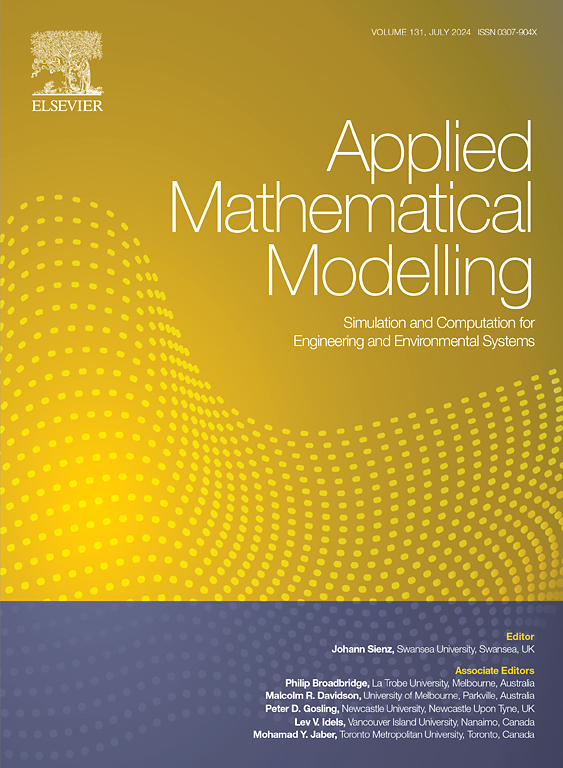具有记忆效应和单位间变异性的加速退化过程的可靠性建模和统计分析
IF 4.4
2区 工程技术
Q1 ENGINEERING, MULTIDISCIPLINARY
引用次数: 0
摘要
要在加速降解试验中进行可靠的可靠性评估,就必须对降解过程进行合理描述。现有方法通常使用马尔可夫随机过程来描述降解过程。然而,由于与环境的相互作用,某些产品的降解过程是非马尔可夫过程。对降解模式的误解可能会导致可靠性评估出现偏差。此外,由于材料和制造工艺的差异,同一群体的产品会表现出不同的降解路径,这进一步增加了准确评估可靠性的难度。针对上述问题,本文提出了一种包含记忆效应和单位间变异性的加速退化模型。降解过程中的记忆效应由分数布朗运动捕捉,它反映了降解的非马尔可夫特性。加速模型中考虑了单位间变异性,以描述不同的退化路径。然后,介绍了正常运行条件下的寿命和可靠性。此外,为了准确估计记忆效应,还设计了一种基于期望最大化算法的新统计分析方法。模拟案例和实际调谐器可靠性分析案例验证了所提方法的有效性。仿真结果表明,用提出的统计分析方法估算出的记忆效应比传统方法准确得多。此外,忽略单元与单元之间的变异性会导致对记忆效应和可靠性的估计出现很大偏差。从调谐器可靠性分析案例来看,与现有模型相比,拟议模型在确定性退化趋势预测和退化边界量化方面都更胜一筹,可以提供更可信的可靠性评估。本文章由计算机程序翻译,如有差异,请以英文原文为准。
Reliability modeling and statistical analysis of accelerated degradation process with memory effects and unit-to-unit variability
A reasonable description of the degradation process is essential for credible reliability assessment in accelerated degradation testing. Existing methods usually use Markovian stochastic processes to describe the degradation process. However, degradation processes of some products are non-Markovian due to the interaction with environments. Misinterpretation of the degradation pattern may lead to biased reliability evaluations. Besides, owing to the differences in materials and manufacturing processes, products from the same population exhibit diverse degradation paths, further increasing the difficulty of accurate reliability estimation. To address the above issues, this paper proposes an accelerated degradation model incorporating memory effects and unit-to-unit variability. The memory effect in the degradation process is captured by the fractional Brownian motion, which reflects the non-Markovian characteristic of degradation. The unit-to-unit variability is considered in the acceleration model to describe diverse degradation paths. Then, lifetime and reliability under normal operating conditions are presented. Furthermore, to give an accurate estimation of the memory effect, a new statistical analysis method based on the expectation maximization algorithm is devised. The effectiveness of the proposed method is verified by a simulation case and a real-world tuner reliability analysis case. The simulation case shows that the estimation of the memory effect obtained by the proposed statistical analysis method is much more accurate than the traditional one. Moreover, ignoring unit-to-unit variability can lead to a highly biased estimation of the memory effect and reliability. From the tuner reliability analysis case, the proposed model is superior in both deterministic degradation trend predictions and degradation boundary quantification compared to existing models, which can provide more credible reliability assessment.
求助全文
通过发布文献求助,成功后即可免费获取论文全文。
去求助
来源期刊

Applied Mathematical Modelling
数学-工程:综合
CiteScore
9.80
自引率
8.00%
发文量
508
审稿时长
43 days
期刊介绍:
Applied Mathematical Modelling focuses on research related to the mathematical modelling of engineering and environmental processes, manufacturing, and industrial systems. A significant emerging area of research activity involves multiphysics processes, and contributions in this area are particularly encouraged.
This influential publication covers a wide spectrum of subjects including heat transfer, fluid mechanics, CFD, and transport phenomena; solid mechanics and mechanics of metals; electromagnets and MHD; reliability modelling and system optimization; finite volume, finite element, and boundary element procedures; modelling of inventory, industrial, manufacturing and logistics systems for viable decision making; civil engineering systems and structures; mineral and energy resources; relevant software engineering issues associated with CAD and CAE; and materials and metallurgical engineering.
Applied Mathematical Modelling is primarily interested in papers developing increased insights into real-world problems through novel mathematical modelling, novel applications or a combination of these. Papers employing existing numerical techniques must demonstrate sufficient novelty in the solution of practical problems. Papers on fuzzy logic in decision-making or purely financial mathematics are normally not considered. Research on fractional differential equations, bifurcation, and numerical methods needs to include practical examples. Population dynamics must solve realistic scenarios. Papers in the area of logistics and business modelling should demonstrate meaningful managerial insight. Submissions with no real-world application will not be considered.
 求助内容:
求助内容: 应助结果提醒方式:
应助结果提醒方式:


